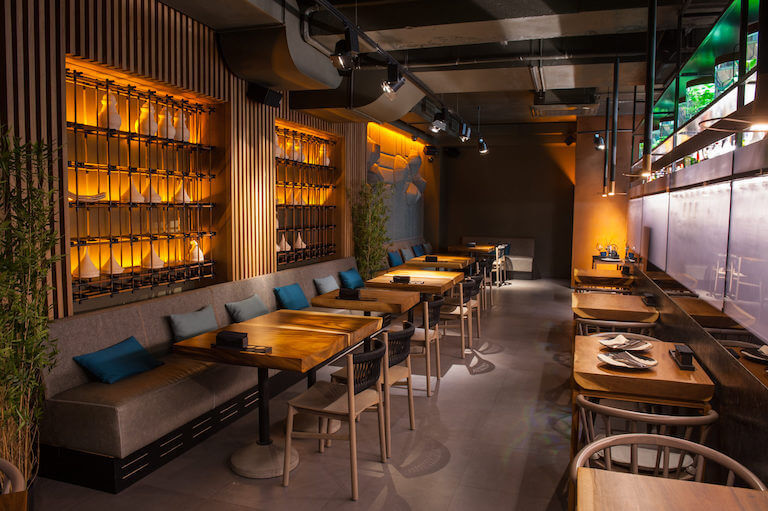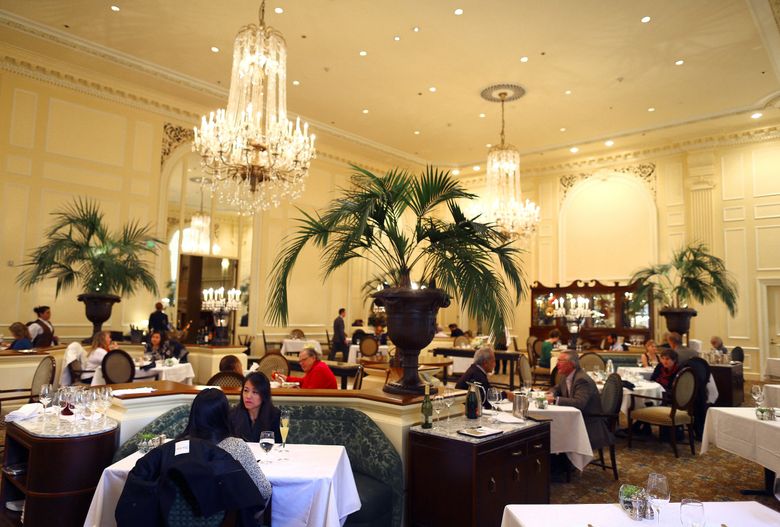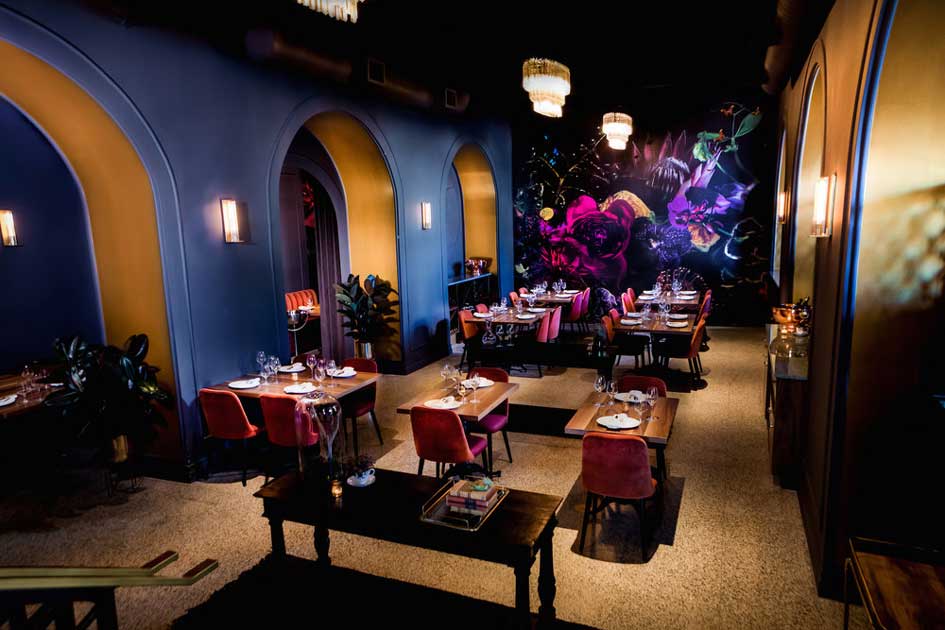Best Asian Restaurant Islamabad: Experience Tastes from Throughout Asia
Wiki Article
Savor Authentic Eastern Food With a Pan-Asian Spin for a Cooking Journey
Embarking on a cooking trip with authentic Asian cuisine, boosted with a Pan-Asian spin, offers an one-of-a-kind chance to check out the abundant tapestry of tastes that define the region's diverse culinary traditions. As you contemplate these luring meals, think about the social narratives and historical influences that form them, each bite offering a tale waiting to be uncovered. Instagrammable restaurants Islamabad.
Discovering Pan-Asian Flavors
In the realm of international gastronomy, Pan-Asian cuisine sticks out for its impressive variety and the unified interaction of flavors from various Oriental cultures. This culinary strategy celebrates the unique components and abundant traditions discovered across the continent, developing a tapestry of tastes that is both fascinating and rewarding. Secret to Pan-Asian food is its capacity to balance contrasting flavors-- wonderful, salted, spicy, and sour-- while highlighting the freshness and quality of each component.From the umami-rich soy sauce of Japan to the intense chili peppers of Thailand, Pan-Asian food uses a considerable palette of flavors. These components are usually integrated in innovative methods, boosting meals with layers of complexity. As an example, making use of fragrant natural herbs such as lemongrass and cilantro, usual in Vietnamese and Thai food, includes a revitalizing illumination to dishes, while the consolidation of coconut milk supplies a velvety, abundant texture.
The focus on fresh produce and fragrant seasonings makes sure that each dish is not just a banquet for the taste yet also for the detects. Pan-Asian cuisine invites diners to embark on a cooking journey, discovering the vast and differed landscapes of Asian gastronomy with every bite.
Combination Dishes to Attempt
While Pan-Asian cuisine is commemorated for its typical flavors, the modern culinary landscape is significantly accepting blend meals that mix these classic aspects with impacts from other regions. This cutting-edge technique not just honors the rich heritage of Oriental cookeries yet likewise presents unique preference experiences that attract modern tastes.
A prime example of such a combination recipe is the Korean-Mexican taco, where marinaded bulgogi beef is wrapped in a cozy tortilla, covered with kimchi and a hot gochujang-infused salsa. This mix marries the vibrant, full-flavored tastes of Korea with the lively, fresh elements of Mexican cuisine. Similarly, sushi burritos have actually acquired popularity, amalgamating the delicate virtuosity of Japanese sushi with the passionate, hand-held comfort of a burrito, commonly featuring combination ingredients like tempura shrimp and avocado with a drizzle of wasabi mayo.
One more notable recipe is Thai curry ramen, which instills the creamy, fragrant seasonings of Thai curry into the comforting broth of traditional Japanese ramen, producing an unified mix that tantalizes the senses. These fusion dishes expand past mere novelty; they stand for a culinary dialogue between societies, urging exploration and advancement worldwide of Pan-Asian food.
Important Active Ingredients and Spices
To really appreciate Pan-Asian food, one need to comprehend the necessary components and flavors that form its structure. This varied cooking style attracts from a rich tapestry of Oriental traditions, using an unified blend of flavors and appearances. Key ingredients include soy sauce, fish sauce, and oyster sauce, which impart a tasty umami depth important to Eastern meals. Complementary to these are rice vinegar and mirin, offering a fragile level of acidity and sweetness.Aromatic aspects are pivotal, with garlic, ginger, and lemongrass being ubiquitous across various Pan-Asian recipes. These active ingredients give an aromatic base that enhances the intricacy of flavors. Flavors such as celebrity anise, cardamom, and cinnamon introduce heat and character, resembling impacts from regions like China and India.

Food Preparation Techniques and Tips
Mastering the art of Pan-Asian food requires knowledge with its distinctive food preparation methods, each adding to the lively tapestry of flavors this culinary custom is commemorated for. Central to these techniques is the stir-fry, a quick food preparation method that preserves the nutritional integrity and dazzling colors of components. Utilizing a frying pan, the stir-fry technique permits even warmth circulation, crucial for accomplishing the characteristic structure and taste balance of Pan-Asian meals.Another basic technique is steaming, particularly common in Chinese food. This gentle technique preserves the natural flavors and nutrients of ingredients, making it ideal for fish and shellfish and veggies. Dumplings, a cherished staple, commonly benefit from steaming, resulting in soft, succulent structures.
Barbecuing, additionally important, gives smoky midsts to meals such as Korean bulgogi or Japanese yakitori (asian restaurant isb). This strategy commonly includes seasoning active ingredients, enabling flavors to pass through deeply before food preparation over an open fire or warmer
Lastly, mastering the art of stabilizing tastes-- pleasant, sour, salty, bitter, and umami-- is important. Appropriately layering these aspects can raise a meal from ordinary to amazing, using a facility and Fine dining experience Islamabad pleasing cooking experience that embodies the essence of Pan-Asian cuisine.
Dining Experiences Worldwide
Around the world, Pan-Asian cuisine supplies an unparalleled dining experience, celebrated for its abundant tapestry of tastes and dynamic presentations. This cooking phenomenon has actually gone beyond social boundaries, capturing the hearts and tastes of food lovers worldwide. In cosmopolitan cities fresh York, London, and Sydney, Pan-Asian restaurants function as fusions where culinary practices from Thailand, Japan, China, and past merge, supplying restaurants with an eclectic mix of meals that highlight the area's diversity.The global charm of Pan-Asian food depends on its capability to provide both authenticity and development. Chefs skillfully marry conventional active ingredients such as lemongrass, soy sauce, and miso with modern strategies, causing dishes that are both refreshingly brand-new and acquainted. This fusion permits restaurants to start a culinary journey that respects heritage while welcoming modernity.
Moreover, eating experiences are raised with thoughtfully designed settings that show the values of Pan-Asian visual appeals. From minimal Japanese-inspired insides to lively Thai-themed areas, each restaurant offers an unique ambiance that enhances the cooking offerings. As an outcome, clients are not just consuming a meal however partaking in a cultural experience, making Pan-Asian dining a truly global sensation.
Final Thought
The exploration of Pan-Asian cuisine uses an extensive understanding of the intricate interaction of tastes and cooking customs throughout Asia. By accepting fusion recipes such as Thai curry ramen and sushi burritos, the cooking trip not only highlights the versatility of conventional active ingredients yet additionally showcases cutting-edge contemporary techniques. This gastronomic journey, improved by cooking approaches and vital spices, gives a special opportunity to value the multiculturalism and cooking creativity that define Pan-Asian food on a global scale.Embarking on a culinary trip via authentic Oriental food, enhanced with a Pan-Asian twist, supplies a distinct possibility to check out the rich tapestry of tastes that specify the region's diverse cooking practices.In the realm of worldwide gastronomy, Pan-Asian food stands out for its remarkable diversity and the harmonious interaction of tastes from various Oriental societies. Key to Pan-Asian food is its capacity to balance different flavors-- wonderful, salted, spicy, and sour-- while highlighting the freshness and quality of each component.

Report this wiki page